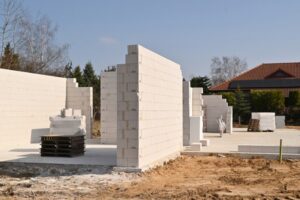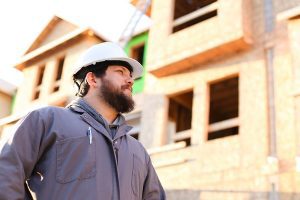On April 13, 2023, Florida enacted Senate Bill 360 (SB 360; to be codified via amendments to Sections 95.11(3)(c) and 553.84 of the Florida Statutes). This change has big effects on construction laws in Florida. Here’s what these changes are and how 2-10 Home Buyers Warranty (2-10 HBW) will continue supporting you.
Takeaways
- The statute of repose for construction defects in the State of Florida is changing.
- SB 360 will clarify and codify start dates for the statute of limitations and statute of repose.
- 2-10 HBW will continue to monitor the changes this law brings and offer industry-leading structural warranty administration to you.
SB 360 overview

SB 360 has significant impacts on the future of construction defect claims in Florida. Most notably, the law reduces the statute of repose for construction defect claims from 10 years to 7 years and creates clarity regarding the date on which the clock starts for these claims.
It also implements provisions that apply to specific circumstances and includes a savings clause, which designates a time frame in which current homeowners can assert claims that would otherwise be barred under the new time frames stated in the law.
Defining the kinds of construction defects

The new law has two operative time frames in which a homeowner must file a claim “founded on the design, planning, or construction of an improvement to real property.”[1] In general, there are two types of construction defects that a homeowner can pursue:
- A patent defect
- A latent defect
By legal definition, a patent defect is “[a defect] about which the owner had actual knowledge or [a defect] about which the owner would have known had he or she made a reasonably careful inspection.”[2]
Put simply, a patent defect is a defect that a home buyer should be able to identify at or around the time the home is initially purchased. For example, painted dirt instead of actual floorboards would be a patent defect.
Latent defects, on the other hand, “are generally considered to be hidden or concealed defects which are not discoverable by reasonable and customary inspection, and of which the owner has no knowledge.”[3]
In other words, latent defects are those that become apparent or develop later in home ownership, such as a structural defect.
The new statute of limitations for construction defect claims

For patent defects, the 4-year clock begins to tick upon the earliest date that (a) a temporary certificate of occupancy is issued, (b) a final certificate of occupancy is issued, (c) a certificate of completion is issued, or (d) when construction is abandoned if the project is not completed. This date is the Commencement Date.
For latent defects, the 4-year clock begins to tick when the latent defect “is discovered or should have been discovered with the exercise of due diligence,”[4] commonly referred to as the Discovery Date.
Changes to the statute of repose for construction defect claims

The clock for the 7-year statute of repose also begins to tick on the Commencement Date, but with different results.
Regardless of the Discovery Date of a claim, a homeowner must initiate the claim within 7 years of the Commencement Date.
This is different from the old law, which stated that homeowners could initiate a claim within 10 years from a more nebulous set of potential dates (discussed in more detail in the next section).
SB 360 provides no additional time to the 7-year statute of repose if, for example, a claim is discovered in Year 5 or 6 after the Commencement Date.
However, it does allow counterclaims, cross claims, or third-party claims (e.g., claims a builder files against a homeowner or another party that’s potentially responsible for the alleged defects) to be filed up to 1 year after a homeowner files suit against the builder, even if the builder’s claims against these other people would otherwise be barred by the statute.
You Build it, We'll back you up.
Learn why 1 in 5 new homes nationwide are covered by a 2-10 HBW Structural Warranty.
Changes to Commencement Date

SB 360 creates more certainty around the Commencement Date by tying it to (a) specific, dated circumstances if construction is completed or (b) a calculated abandonment date if the construction is abandoned. This change may be a potential solution to a long-standing source of confusion and frustration.
The former law included certificate of occupancy, certificate of completion, and date of abandonment as potential Commencement Dates. It also included possession by the owner, and the date of completion or termination of the contract between certain construction professionals.
The former law also asserted that the latest of these dates started the clock for the statute of limitations and statute of repose, which was a near constant source of frustration to both homeowners and builders who would often engage in expensive litigation around the operative date just to determine whether a claim could be filed at all.
Additional clarifications

In addition to implementing the changes above, SB 360 provides additional clarification to issues specific to the Florida construction industry, including the Commencement Date for model homes and multi-dwelling projects, and specifying a particular construction defect.
Changes to Commencement Date for model homes

The clock begins to tick, for both the statute of repose and statute of limitations, when the deed to the home is first recorded as transferring title to another party.[5]
This clarification will provide a much later Commencement Date than any other homes. This will extend the time frame in which claims may be asserted by a homeowner, and ensure that there is certainty to both the homeowner and the builder regarding when the operative time frames begin.
Changes to Commencement Date for multi-dwelling projects

SB 360 specifies that each particular building in a multi-building project will be considered a separate improvement for the purposes of determining the applicable Commencement Date.[6]
This ensures that each independent structure, likely including townhomes that have no shared structural components, will have clearly applicable Commencement Dates.
Material violations of Building Code

SB 360 clarifies when claims may be asserted based on violations of Florida Building Code by specifying that the violation must be material, which means the violation may reasonably result or has resulted in physical harm to a person or significant damage to the building.[7]
This change tracks with current administrative law that imposes penalties on builders for material violations of the Code.[8] The revision to the law narrows the claims that can be asserted against builders for potential violations of the Code.
SB 360 Effective Date and savings clause

All provisions of SB 360 became effective the date the law became active: April 13, 2023. All provisions apply to all homes, regardless of the date a home was completed.
This immediate Effective Date will extinguish several claims that homeowners would otherwise have been able to assert, whether due to the change in the Commencement Date moving the clock back or the reduction of the statute of repose from 10 years to 7.
In recognition of eliminating these claims, the law includes a savings clause, which allows homeowners to file claims that are eliminated under the provisions of SB 360 before July 1, 2024.[9]
Due to this change, there is a distinct possibility that Florida will see a significant increase in alleged construction defect claims through July 1, 2024, as homeowners and their attorneys attempt to preserve their ability to pursue claims against builders that are barred under the new law.
Conclusion

The new changes to Florida construction law look to resolve sources of uncertainty related to construction defect claims that have been a source of expensive litigation. The final effects of the law remain to be seen.
However, because they take effect immediately, there is a high likelihood that litigation challenging the law and its interpretations will follow.
2-10 HBW encourages all builders to consult with a licensed Florida attorney to incorporate any potential changes into their applicable contracts and policies, and to provide guidance and advice in the event any claims are asserted against them.
2-10 HBW will continue to monitor the effects of evolving litigation related to SB 360. We will also continue to offer industry-leading structural warranty administration, along with Dispute Avoidance and Mitigation services to our Builder Members.
Disclaimer: 2-10 HBW is not a law firm and is not providing legal advice. The information provided in this article is subject to the terms and conditions of this website. It is only intended to be used for informational purposes and not for the purpose of providing legal advice. This information is related to a new law, and is subject to ongoing interpretation and analysis by Florida courts and legal professionals. You should contact your attorney to obtain advice with respect to any particular issue or problem. Use of and access to this information or any of the links contained herein does not create any obligation or relationship between you and 2-10 HBW.
Learn how you can protect your business and add valuable selling points to your new builds with a 2-10 HBW Structural Warranty.
References
[1] Fla. Stat. § 95.11(c)(3), 2023 (forthcoming).
[3] Alexander v. Suncoast Builders, Inc., 837 So. 2d 1056, 1058 (Fla. 3d DCA 2002).
[4] Fla. Stat. § 95.11(3)(c), 2023 (forthcoming)
[5] Fla. Stat. § 95.11(3)(c), 2023 (forthcoming)
[6] The originally proposed version of SB 360 addressed each dwelling within a building as a separate improvement with a separate Commencement Date, which was changed in amendments, as the originally drafted law could have created significant uncertainty in buildings where separate dwellings share structural and/or system components.
[7] Fla. Stat. § 553.84, 2023 (forthcoming).
[8] Fla. Stat. § 553.781
[9] SB 360 § 3.








